Conservation Problem
The Yuanbaoshan fir and the Ziyuan fir are on the edge of extinction, but effective conservation interventions have been lacking.
Project Goal
To reduce threats to remaining Yuanbaoshan fir and Ziyuan fir trees and support their recovery self-sustaining populations.
Why these species?
The Critically Endangered Yuanbaoshan fir, Abies yuanbaoshanensis, and the Endangered Ziyuan fir, Abies ziyuanensis, are two of the most highly threatened tree species in China. Both fir species face threats from habitat degradation, limited natural regeneration and climate change, have small and declining populations and are only found within restricted areas.
The Yuanbaoshan fir numbers less than 420 individuals and occurs only in a four hectare area within Yuanbaoshan National Nature Reserve (NNR), Guangxi Province. The species is threatened with habitat degradation mainly from the illegal entry of tourists to the reserve’s core zone, which has caused significant degradation of the fir’s habitat. With such a restricted distribution, extreme weather events, which have caused mortalities in the past, could also cause significant damage to the population.
Ziyuan fir is known only from four areas in Jiangxi, Hunan and Guangxi Provinces, including an important population in Yinzhulaoshan Provincial Nature Reserve (PNR), and is thought to number fewer than 600 individuals. The main threats are limited natural regeneration, grazing, and logging for timber. Natural regeneration is a problem because the species produces seeds only every few years and seedlings are slow growing.
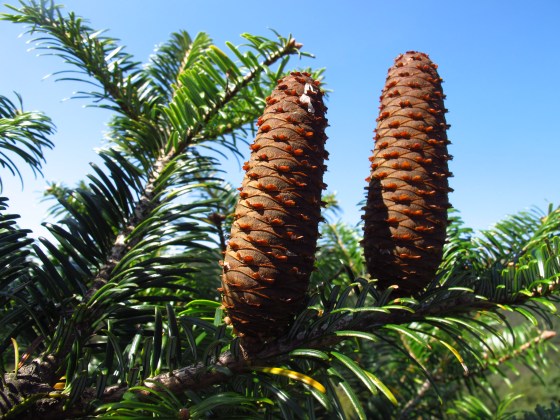
Ziyuan fir cones; Ding Tao/Guangxi Institute of Botany.
What did we do about it?
Recognising the need to raise local capacity for tree conservation, GTC, in collaboration with Guangxi Institute of Botany (GIB), provided training to rangers and technical staff from both Yuanbaoshan NNR and Yinzhulaoshan PNR and helped them secure small grants to support conservation status assessments and the development of conservation recommendations for each species. Threats to both species were reduced through increases in patrol effort and the wild populations have been reinforced through propagation and planting efforts.
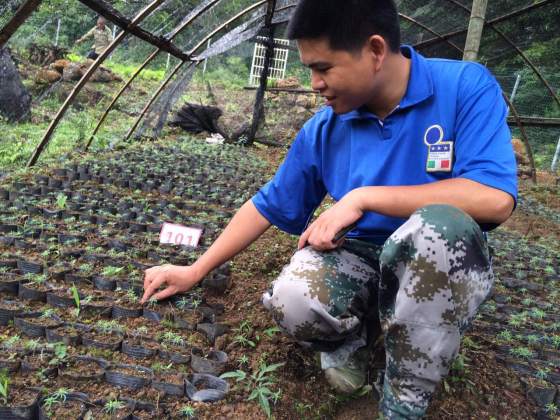
Reserve Director Luo at Baiping Nursery, Yuanbaoshan Nature, 2016. Credit: Geng Yanjing/FFI.
Key achievements
Due in part to effective patrolling efforts, 2018 saw the illegal entry of tourists to Yuanbaoshan NNR’s core zone drop its lowest point since records began, down from 1,000 incidents in previous years to 200. Within Yinzhulaoshan PNR, grazing was down by 50% in 2018 compared to 2015 levels. This followed a reserve-wide grazing ban in 2017, introduced in response to grazing data collected and presented to the authorities by the project.
As of May 2018, a total of 300 Yuanbaoshan fir seedlings planted in May 2016 and 2017 in three sites had survived, with an 85% survival rate. There are currently 40,000 four year old seedlings in the nursery which will be planted out in the reserve in the near future.
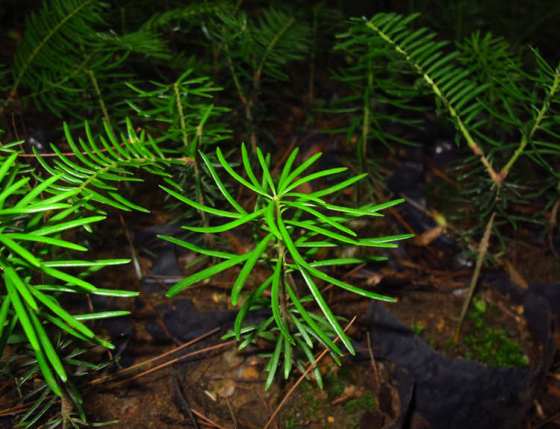
Yuanbaoshan fir seedling; Credit: FFI China.
Regarding the Ziyuan fir, with a decrease in grazing pressure and zero records of logging, threats are being managed more effectively. Although there has been high seedling mortality, there are currently 200 seedlings in the wild and 100 in nurseries. To tackle the remaining issue of low natural regeneration, Guangxi Institute of Botany led research into causes and possible solutions, including trialling artificial pollination of Ziyuan fir flowers. Following this work, wild seedlings were observed for the first time since 2015; this research will continue to refine propagation methods for the future.
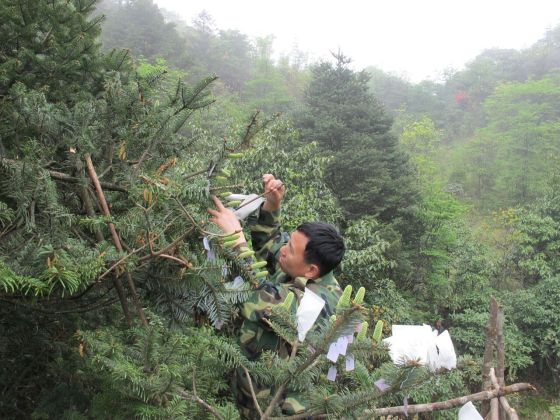
Artificial propagation by GIB’s Hu Xinghua. Credit: Ding Tao/GIB.
Working with local communities, co-management arrangements have been developed for both reserves, a rare management model for China, giving communities a recognised role in management of these areas.
This work is now being taken forward by a local NGO, the Guangxi Biodiversity Research and Conservation Association (BRC). With threats significantly decreased, determined regeneration efforts and strong community engagement, the future of both fir species is undoubtedly more secure.
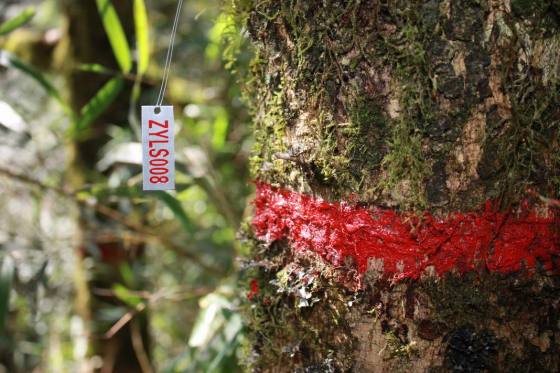
Ziyuan fir tree tagged for regular monitoring in 2013. Credit: Unknown.
Acknowledgements
This work has been supported through funding from Fondation Franklinia, IUCN’s Save Our Species, the Mohamed bin Zayed Species Conservation Fund, Huaxia Airlines and Guangxi Forest Department.
Contact details
For more information on this project, please contact [email protected]
